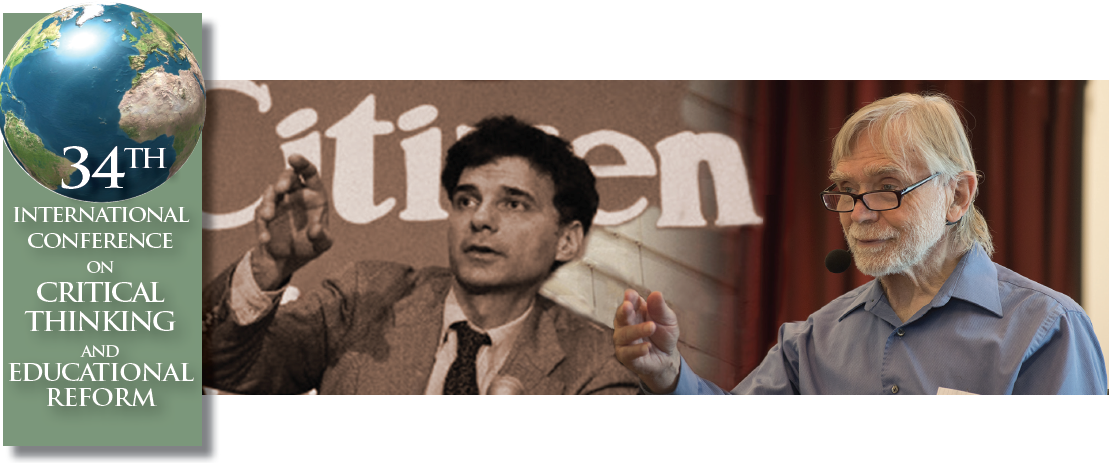
J. Stephen Scanlan
Southwestern College
Sweetwater Union High School
The new Common Core Standards (CCS) require United States K-12 students to apply a rigorous set of skills to tie together cross-discipline content in ways they have never been expected to before. However, while the CCS articulates what students are required to do, it does not provide a framework for how to achieve those goals. This presentation considers the results of a study in which grouped students in four eleventh grade honors-level English Language Arts (ELA) classes were asked to analyze a set of texts in order to identify and explain the philosophical ‘zeitgeist’ that permeated pre-industrial revolution-era philosophy, literature, and politics to create a social world shift. This presentation explains the basis of the CCS and how the Elements and Standards of Reasoning can be utilized to meet their demands, and presents the results of a study in which the products of classes that used the Elements and Standards are compared to those that did not. As measured by CCS ELA rubrics, the students who utilized the Elements and Standards performed significantly better than those who did not.
_______________________________________________________________________
This teacher action research study examined the effects of a critical thinking instructional intervention in a higher education technology course at an American undergraduate university with the purpose of determining the extent to which the intervention enhanced student critical thinking knowledge, skills, dispositions, application and transfer abilities. A mixed methods research design utilized the California Critical Thinking Skills Test, California Critical Thinking Disposition Inventory and Critical Thinking Knowledge Test in pretest/posttest fashion using within subject t-tests to determine the extent to which students’ critical thinking knowledge, skills, and dispositions were enhanced by the instructional intervention. Qualitative methods utilized a pre/post student perception questionnaire and coded analysis of student course projects to examine changes in students’ perceptions regarding critical thinking virtues and their ability to apply and transfer these virtues in both their coursework and to their lives outside of the course. Result data revealed a favorable impact across all five critical thinking domains. The implications of the study suggest that becoming a critical thinker is not an automatic process, but when made explicit and implemented intentionally, can result in significant gains in critical thinking knowledge, skills, disposition, application, and transfer abilities.
_______________________________________________________________________
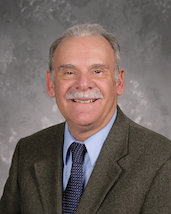
As teachers we are responsible for designing courses and assignments to engage our students in critical thinking. In order to help the student discipline his or her thinking, the elements of reasoning and the intellectual standards need to become integrated into all assignments. The ideal goal for students is not only to learn but also internalize critical thinking strategies so that in all of their reasoning intellectual engagement becomes a habit of the mind. Practical examples of such assignments will be introduced in this session. Participants will be able to share with others how they might be able to incorporate these and other strategies to help their students become more engaged in analyzing and assessing their own thinking.
Developing critical thinking skills of students with special needs is not an indulgence but rather a necessity if they are to become productive citizens of our society. People with learning disabilities are vulnerable and therefore it is essential to teach them with coping mechanisms that will prepare them for real-world challenges. As educators, we need to ensure that their contributions to the community are not tokenistic but rather of real value to them and to those they serve. My discussion will focus on Intellectual Independence, Intellectual Perseverance and Intellectual Empathy as cardinal building blocks in honing critical thinking among individuals with special needs. I will also discuss the measurable outcomes of this goal.
_______________________________________________________________________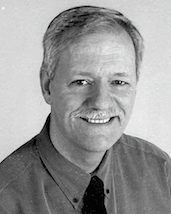
_______________________________________________________________________
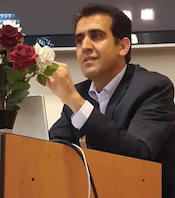
The idea behind glocalization is thinking globally but acting locally . In fact it is about a situation in which universalizing and particularizing tendencies co-exist. In the world of business and commerce glocalization means a case in which a global product is transformed into another shape in order to meet the needs of local consumers. Adapting farming techniques to local conditions or encouraging people to make websites in their native languages are other examples of glocalization. Glocalization has also appeared in academic dialogue concerned with the response of education to a rapidly evolving global environment. Jeffrey Brooks and Anthony Normore argue a need for incorporating a glocal perspective within the technique of academic leaders. They propose that this occur as “meaningful integration of local and global forces,” or glocalization.
Promoting critical thinking in different parts of the world can be successful provided the local exigencies are taken into consideration. Asking for reasons and being open to alternatives, for example, are in conflict with the practices and principles of some cultures. According to Ennis (1998) the Inuit in Canada find it offensive to be asked for their reasons and are reluctant to reveal their mental states such as desires or beliefs. Some cultures do not hold that the worth and dignity of every person should be cared about, rather only a select group, perhaps the members of the culture. Nazi and slave-owning cultures, and religious fundamentalism are examples. In this way I believe sudden introduction and widespread promotion of critical thinking for all situations should be avoided. In this session we discuss how critical thinking promotion can be pursued with great discretion and with no apparent challenge to authorities.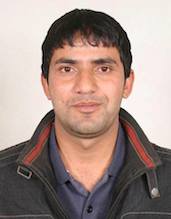
The practice of dogmatic approach of instruction makes students monotonous. In thinking and sharing value of curriculum; project based learning, thinking curriculum, lifelong learning, the process-guided instruction and alternative assessment system are emphasized.
While doing this, critical thinking, ability to analyze, evaluate the information and the problem solving is critical thinking is more practical than other. When I realized that it is necessary to explore the view on critical thinking practices in Nepalese classrooms and find the possible ways to enhance this practice among students, the overarching research question for this purpose was how do the teachers perceive and practice critical thinking. To answer this question I have selected three secondary school teachers and six students from Kathmandu districts as research participants. I have used qualitative research approach to pursue the study in which I used critical-constructive research paradigm. I used pre-observation interview, classroom observation, interview with the teachers (mostly after observation) and interview with the students to collect the data. I observed that teachers perceive critical thinking as an alternative thinking, a strategy, and deep thinking. Critical thinking is mostly used in proving facts, figures and theories in classroom practices where a teacher’s role is very noteworthy. When teachers need to explain everything, a teacher perceives that critical thinking is a process of error detection with reasons. It is done by students and that develops confidence in students ultimately. There are three types of teachers found in this study. The teachers mainly neglected to include most of the students; and internalize the matters. I have found critical thinking practices in the classroom useful when the teachers seem to be novice in using questioning, reasoning, providing thinking times, etc.Purposeful implementation of Dr. Richard Paul and Dr. Linda Elder’s Elements of Thought, Intellectual Standards, and Socratic Questioning could strengthen students’ perceptions of critical thinking and of their own critical thinking abilities. Educators can cultivate these intellectual traits by encouraging students to develop those skills necessary for clearly and logically evaluating the credibility and the reliability of rhetoric. Assuming that an argument can be any text - written, spoken, aural, or visual – that expresses a point of view, it is vitally important for educators to challenge students to consider new perspectives on topics they may feel they already understand and to provide practice for analyzing the sorts of arguments they will be assigned in their various courses. Implementing Paul and Elder’s Elements of Thought, Intellectual Standards, and Socratic Questioning through direct instruction in rhetorical analysis could encourage students to detect and evaluate the assumptions, ego-centrism, and socio-centrism in the rhetoric they are exposed to in literature, in the media, and in their own writing. Furthermore, students are provided with the tools necessary for the acquisition of intellectual humility as they approach the complexities of life with clarity, accuracy, and precision; explore multiple perspectives of difficult problems; and learn to sympathetically acknowledge the viewpoints of others with breadth and clarity.

Our nation is desperate for a generation of inspiring leaders for national and international government and business positions, and for our communities. Often, our education system does not nurture independent decision-making and action in students who may aspire to leadership.
In this workshop, participants will be introduced to a highly interactive leadership development program designed for high school students who learn to see where there is need and how to take the lead. Workshop attendees will understand how students cultivate Critical Thinking elements, standards, and virtues throughout this four-pronged program that offers coursework (in etiquette, Appreciative Inquiry, ethics, communication skills, team building, leadership styles, social and economic issues, and global perspectives), leadership seminars (deep conversations with local government and business leaders examining challenges they face and approaches they find effective), weekly mentor meetings (in the workplace with an adult who has leadership responsibilities in their career), and community service (assisting needy organizations as well as creating and delivering a student-designed event).
Each facet of this program will be clarified along with underlying themes of diversity & inclusion, identity development, social-emotional learning, and maturing social conscience. The blueprint for this program can be replicated in any community or workplace of committed citizens.
_______________________________________________________________________Teaching and learning a Foreign Language is a privileged ground to develop this kind of thinking because the students are facing a different culture, a new way of thinking and living. This factor can make them reassess their own way of thinking. As a result, they can discover some assumptions that they have taken for granted because they are part of their cultural background. This is especially relevant if we take into consideration the importance cultural shock. In my presentation, I will work on the results of a research project based on some interviews conducted during 2013. I have interviewed people from Spain who live in Thailand and I have used their stories reporting a cultural shock experience. Afterwards I have used these stories in order to create activities based on real experience. The idea of reading these stories is to provoke the reflection and awareness of some assumptions we make because of our culture.
In my presentation, I am planning to explain some of these real anecdotes. It will be also asked to the audience to reflect about personal experiences regarding cultural shock abroad or within their own country with people who represent a different culture, maybe even their own students. These personal experiences regarding cultural shock stories and the conflict behind can be analyzed in a more profound manner through disciplined use of the Elements of Thought and the Intellectual Standards.
_______________________________________________________________________
If there is one question we need to be asking about classrooms today, it is what level do students truly think through content in a critical way? Asking this initial question begins the fundamental shift in educators thinking from a typical classroom to a classroom that fosters the work from Paul and Elder at the heart of curriculum, instruction and assessment design. When working through this necessary shift, educators must ask what is worthy of my time with students? What is worthy of the student’s time? And how will the students exhibit a level of criticality in assessment? Using the Paul and Elder framework, specifically the: Elements of Thought, Intellectual Standards, and the Intellectual Virtues one can begin to rethink how students are asked to learn, what students are asked to learn, and how students can share their thinking. Additionally, close reading, Socratic dialogue, diads and other instructional strategies will bring critical thinking to life, even in the youngest of students. “The important thing is to not stop questioning,” Albert Einstein stated, and this is the preface for my work as an educator in a primary classroom, utilizing the Paul and Elder framework as my primary source for restructuring the educated classroom, and in result, the educated mind.
_______________________________________________________________________
Careful observation is fundamental to a fair-minded understanding of the world and is important to continue to develop in elementary students through increasingly challenging learning activities. In her book, Emergent Science, Johnston (2014, p. 8) refers to observation as the “first and most important scientific skill” and suggests it begins to develop in the womb as the fetus learns to recognize familiar voices. While preschool curricula often focus on improving observational skills in early childhood, researchers Eberback and Crowley (2009) note that elementary classrooms neglect further development in middle and late childhood. This is unfortunate as it takes increasingly challenging experiences to improve any skill and careful observation is needed for well-developed habits of mind including clarity, accuracy, precision, depth, and breadth. Moreover, strong observational skills underlie such critical thinking concepts as comparing and contrasting viewpoints, evaluating evidence, and noting the sometimes subtle differences between fact and opinion. This discussion will provide a background on the development of observational skills in early childhood, connections between observation and critical thinking, and challenging activities to improve observational skills in elementary school students.
_______________________________________________________________________
Nowhere is the issue of dissent more evident as a check to today’s society than in the experience of the whistleblower who exposes misconduct, dishonesty, illegal or unethical practice. Whistleblowers confront unique critical-thinking challenges in particular the conflict between following orders and obeying their conscience. Moreover, the whistleblower must contend with "an uneven playing field" against wrongdoers in authority who use unfair fear-mongering tactics such as the cover up of evidence, visceral attacks on the whistleblower's person and performance, the reinterpretation of facts and the intimidation of witnesses. The final hurdle is all too frequently costly and lengthy litigation in the knowledge that the whistleblower will be "defeated" due to limited financial resources. Contemporaneously, the whistleblower must manage his or her own increasing isolation and marginalization from the world of work, community and family.
This paper will elaborate the intellectual and moral virtues embodied by whistleblowers in making critical thinking decisions about whether and when to blow the whistle, namely, intellectual humility, courage, integrity, perseverance empathy and fair-mindedness. The seminal decision of a whistleblower must rest on the assessment and synthesis of available legal protection. This dichotomy will be illustrated by evidence from two institutions in which whistle blower protection is less than adequate: USA and UK national intelligence agencies and the United Nations. When the whistleblower is no longer protected under law, or is subject to criminal prosecution in retaliation for speaking out about wrongdoing, serious implications exist for a truly free society.
Can educational reform address this important issue given that our hierarchical education systems are structured to reward the status quo and sanction dissent? Although the teaching of critical thinking skills is an imperative for future generations- perhaps their real world application unfairly exposes dissenters to vested interests with potentially brutal consequences. Perhaps the optimal critical thinker would envisage comprehensive whistleblower protection laws and their proper implementation ad interim.
_______________________________________________________________________More than the minimal capacity to read, write, and calculate, quantitative literacy connotes the defining characteristics of an educated (literate) person: it suggests, of course, a level of comfort/ease with numbers, but more importantly, it involves the ability to assess the strength and implications of information presented in numerical terms. Acquiring these skills determines an individual’s capacity to control her quality of life and to make important personal and professional decisions. Beyond that, quantitative literacy is also critical for a democratic society, in that it empowers people by giving them the tools to think for themselves, to ask intelligent questions of experts, and to confront authority confidently.
Unfortunately, many students (and even adults) remain functionally innumerate because the increase in quantitative data and numbers has not been accompanied by an increase in competency with quantitative data and numbers. Consequently, they struggle with tasks ranging from reading and interpreting tables or graphs, analyzing evidence, reasoning carefully, understanding arguments, questioning assumptions, detecting fallacies, understanding and critically evaluating numbers presented in everyday life, to working within a scientific model and knowing what kinds of data might be useful in answering particular questions.
This session will explore practical strategies for improving quantitative literacy and fostering critical quantitative reasoning through the use of research data and related tools in the undergraduate social science classroom.
Broward College has embraced critical thinking as an essential skill for its students to possess; therefore, it has selected critical thinking as the topic for its first Quality Enhancement Plan for accreditation through SACSCOC. A student’s ability to think critically is at the core of teaching academic survival and success because if an institution can assist students in thinking more critically then students will be empowered to make informed decisions about their academic success. This session will discuss strategies that Broward College has developed to assist students enrolled in associate degree programs. Through Broward College’s conceptual framework of teaching and learning strategies and outcomes-based assessments, workshop participants will be exposed to practical ideas and strategies using the Paul-Elder model to cultivate students’ critical thinking skills with the goal of student success and completion.
_______________________________________________________________________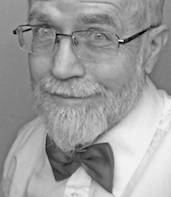 Critical Thinking and Ethics
Critical Thinking and Ethics The application of critical thinking and ethics is changed radically by the behaviour that the Internet and the social media allow for impulsive, unmediated, unfiltered publishing of information. From models like Wikipedia, Wikileaks and #OccupyWallStreet, thinking and ethics in communication have become a process of revision while the event is happening with no dominant authority in control. That means a shift of power to the public citizen both as an individual and as a group acting in an unknown dynamic, with a transformation of the challenge of cultivating critical thinking and ethics. A good or a bad result may depend on the unpredictability of the circumstances and the unpredictability of the particular group dynamics. In that way, the result may be a more reflection of human nature, rather than the direct mediation of those with power and authority. Wiki-ethics would be a collaborative, citizen-based effort working from inside the changes to boost and channel the potential for ethical action in the Internet era and to investigate ways to make goodness go viral.
_______________________________________________________________________Teaching critical thinking is challenging for any instructor. However, the task is made exponentially more difficult if learners come from a culture whose sociopolitical and educational background never included critical thinking or may have even discouraged it. Because of this lack of exposure to these concepts and practices, there can often be profound and unexpected differences in these students’ learning styles and cognitive abilities that make it difficult to handle critical thinking concepts. This session details 1) problems you might encounter when teaching students from different cultures, such as resistance to open-ended questions, collaboration, and student-centered activities, 2) possible causes for this reluctance, e.g., authoritarian policies that inform many pedagogies, and 3) strategies to circumvent this resistance. Participants will come away with a keener appreciation of how these students’ background has shaped their thinking and how you can best tailor instruction.
_______________________________________________________________________In this workshop, I will share my experience incorporating the Paul/Elder framework of the 'Intellectual Virtues,' 'Elements of Thought,' and 'Intellectual Standards' into my own classroom practice and, with colleagues, across the student experience. I will emphasize using the tools of critical thinking to move between the whole of an idea and its component parts. 32 Support Strategies for first-year students will be explored.
The session will move from the specific to the general, in this order:
• Introducing a substantive conception of critical thinking in one class, in one department, for one semester.
• Developing fairminded critical thinking pilot projects for classes in one department.
• Encouraging Socratic critical thinking in classes across the philosophy department.
• Engaging with colleagues to incorporate strong-sense critical thinking into all first-year seminar classes.
• Working to create a culture of critical thinking awareness for better close reading and oral assignments across the curriculum.
Handouts for the different levels of development will be available.
The fifty minute session embodies a critical thinking activity that will engage participants as both “student” and “educator.” The exercise will use a current and relevant social issue and apply the elements of thought along with the intellectual standards and a form of Socratic questioning to arrive at a greater understanding of a complex problem. This exercise can be used in the classroom or applied to the “global” classroom as well.
_______________________________________________________________________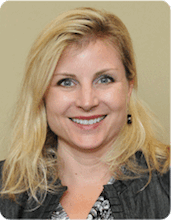
Literary analysis offers English teachers an ideal vehicle for modeling, practicing, and teaching critical thinking skills. Though the study literature has traditionally emphasized the application of literary elements such as setting, characterization, form, meter, and theme, we believe that an explicit, deliberate, and careful application of the Elements of Reasoning and the Intellectual Standards of Critical Thinking, along with a focused emphasis on metacognitive inquiry, produces deeper textual analysis and leads to more significant conclusions about literary texts. Drawing on our years of teaching both literature and critical thinking at the college level, we will share practical teaching tips and strategies to incorporate critical thinking explicitly into the literature classroom. In this session, we will discuss the theory and practice of our own integration of critical thinking strategies into our literature classrooms and will share helpful handouts, discussion questions, and application exercises suitable for integration into the literature classrooms ranging from middle school to graduate school. Our session will also include an integrative workshop experience in which participants can practice applying critical thinking skills and analysis to selected, short works of literature.
Our interactive workshop will emphasize the relationship between critical thinking and our students' field of study, showing how they worked in teams to develop relevant, engaging team projects.
First, we will showcase outstanding examples of our students' career projects. Then, we will lead the workshop participants in applying Richard Paul's theory of critical thinking, using his established elements and standards to emphasize the thinking behind these projects. The participants will re-create the framework of team thinking by constructing the three-prong critical thinking foundation of our students' projects. This task includes the analysis and assessment of the students' career paths, outstanding leaders and their contributions, and trends in their field. For added engagement, the participants will analyze their own fields of study for a real hands-on demonstration.
The session will end with each group sharing highlights of their team's findings, more examples of our students' work, and a question/discussion segment.
_______________________________________________________________________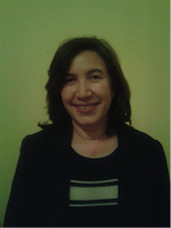
Since the establishment of a unified educational system underpinned by the transformative goals of the new constitution, following the ending of the apartheid era, the South African school curriculum has undergone a series of changes. One aspect that was emphasized in all the policy documents was the requirement for the development of critical thinking. Qualities such as the ability to think critically in order to make informed decisions and to solve problems in social, scientific and economic contexts were highlighted. Despite the rhetoric, there were no clear guidelines which showed teachers how to develop critical thinking in their learners. In response to this, the Critical Thinking Group (CTG) was formed in 2003 comprising; teachers, teacher educators at a university in Cape Town, curriculum advisors from the provincial education department and researchers from overseas universities (York, England, and later, Wisconsin-Maddison, USA). This core group of educators have been working consistently to introduce science teachers to methodologies that would develop critical thinking in their learners. The first three years of the CTG project focused on in-service teachers while subsequent years focused on pre-service student teachers . Some of the outcomes of research and development in critical thinking have been several journal articles, teaching and learning materials as well as the development of a module on critical thinking in a teacher education programme.

Students at Eastern Kentucky University are taught to solve life’s problems inside the element wheel, surrounded reassuringly by the eight elements of thought and the additional 27+- synonyms, plus the intellectual standards and traits. Students are taught to enter the Element Wheel at the position of “Problem”, remaining inside the wheel until the problem is solved, developing and analyzing alternative solutions, and finding preferred solutions by applying all elements. Students exit the element wheel at the position of “Solution”, or remain inside to solve additional problems. Student success in life and career requires problem-solving perseverance reassuringly from inside the Element Wheel.
_______________________________________________________________________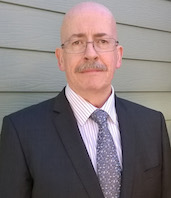
The thinking environment in organizations is both complicated and complex. This is due to the interaction between individuals thinking for themselves, teams thinking cooperatively and organizational structure, culture and processes. This session will explore the barriers to critical thinking development in organizations and suggest strategies to overcome them. The session uses the 8 Parts of Thinking as a framework to analyze issues with thinking in organizations.
______________________________________________________________________________Empathy improves critical thinking. It helps avoid logical fallacies, such as naïve realism, false consensus effect, mirror-imaging, confirmation bias, and the straw man fallacy. (Admittedly, it may encourage some others, like over-identification, over-rapport, naïve fallibility, and hasty generalization.) Empathy also helps identify hidden assumptions in one’s reasoning.
This paper stems from a monograph written at a U.S. Army school. The monograph was a larger project focused on empathy’s contribution to military planning. Thus, some examples refer to military circumstances.
21st century learners require skills that will allow them to interpret, analyze, synthesize and extend information. Embedding critical thinking activities into everyday practice makes this second nature to our students. Upper elementary is the exciting age where students begin to discover the world around them and start to explore diverse ways of thinking. We will share different projects and activities our students in fourth to sixth grade have participated in to help stimulate critical thinking. All of our core subjects endeavor to help our students become life long critical thinkers. This will be a practical look at how you can embed critical thinking into your elementary classroom.
_______________________________________________________________________
Using Social Media as an Access Point to Analyze Our Thinking (For Teachers and Elementary School Students)
Shira M. Cohen-Goldberg
Lead Facilitator
Hill for Literacy
The Common Core State Standards establish that teaching practices and related tasks that help students cultivate their thinking are to be prioritized in classroom instruction. This presentation is designed to help participants explore novel ways to bring the core concepts of critical thinking to elementary and middle school students. By nature, digital information (including social networking sites and youtube), is continuously accessible, abundant, and often requires careful analysis. Social media is a timely and appropriate means to help young students analyze new information and is an engaging point of access for all students. Presenter will use digital media to help participants explore the concepts of information/inferences/assumptions, touch on Paraphrasing and Explication, and deeply engage in the analysis level by exploring the logic of an internet persona’s thinking. Presenter will offer methods and tools to help students move their thinking beyond digital media and into textual analysis.
_______________________________________________________________________
Running Toward the Confusion: Making Intellectual Traits Central and Accessing them  Meaningfully
Meaningfully
Kurt Weiler
English Teacher / ESL Coordinator
New Trier High School
Intellectual traits (intellectual humility, intellectual courage, intellectual empathy, etc.) are fundamentally important to all of us who seek to cultivate critical thinking in our classrooms, but they can seem too abstract to be used in assessment. Using examples from a high school English class, this session will examine how teachers can fundamentally reorganize their classrooms to make the development of intellectual traits the central feature of student learning. The session will address the crucial role of student reflection in helping students to understand the intellectual traits, relate them to their own academic experiences, and create meaningful academic goals in a given subject area. It will also explore ways to cultivate critical thinking through the use of critical reading journals, which ask students to “run toward the confusion” instead of seeking the shelter of safe answers. In addition, the session will explore how student-teacher conferences can be used for assessment by requiring students to present evidence from their journals that demonstrates their growth in the intellectual traits. Finally, the session will examine how the shift to making intellectual virtues central in a classroom can result in creating a more personalized and meaningful learning experience for each student.
_______________________________________________________________________
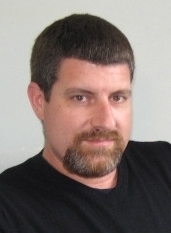 Thinking
ThinkingThe goal of our workshop is to use our experiences implementing a professional development program to help conference participants generate institution-specific strategies for increasing and improving critical thinking pedagogy. As indicated by Cosgrove (2013), “the most positive contributing pedagogical element [for improving teaching and learning] was the ‘learning community’ model” (p. 231), and this emphasis on a supportive group of faculty who share a commitment to a values-based (e.g., intellectual humility, courage, fair-mindedness, etc.) approach to teaching and learning, which was built into our model from project conception, will be emphasized in our workshop. The session will be interactive, with participants engaging in brief small-group activities in which they use the Framework to help them think deeply and broadly about aspects of the culture of their own institutions that might either facilitate or inhibit the development of an institution-wide effort to improve students’ critical thinking disposition and skills. Participants should leave the session with a beginning plan for improving critical thinking pedagogy at their institutions.
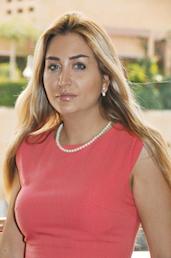 Thinking as a Goal and a Learning Outcome?
Thinking as a Goal and a Learning Outcome?I have been teaching the application critical thinking within history for over 13 years as a Social Studies teacher. My definition for critical thinking is the continual process of engaging authentically, through actions and words, process and product, with the world around us in a substantive manner. Having taught in both the challenging setting of inner city schools to the affluent prep school environment, I find there is this continual neglect to think critically in teaching and learning history within the realm of critical thinking. I tend to believe this neglect stems from simple ignorance on the topic, fear of the skepticism and perceived subversion critical thinking is seen to represent, and a general misapplication of criticality; an example being the ability to score well on a AP (Advanced Placement) exam and assuming because one was able to pass, they were actually applying critical thinking in history, when in reality, they memorized information but their retention and actual understanding of the history is superficial at best.
In my presentation I seek to discuss and disseminate how the focus on historiography (the act of thinking critically in history) has to be the main component when teaching any sort of course in the realm of history. I will also cover different historical perspectives that have been developed within a framework of critical thinking (i.e. historical forces, material dialectic, orthodox vs. revisionist mindsets) and see how aspects of Student Guide to Historical Thinking compliments these said methods. In closing the presentation I hope to have a dialogue as to what obstacles stand in the way of providing students from developing a historical/critical perspective and how to go about finding solutions when faced with these obstacles.